- 바티칸 성베드로 성당에 김대건 신부 성상 설치…동양인 최초
- 한국 최초 사제였던 김대건 신부 성상이 바티칸 성 베드로 성당에 설치됐다. 동양인 성인의 성상이 성 베드로 성당에 설치된 것은 이번이 처음이다. 한국천주교주교회의는 7일 “오는 16일 오후 3시(한국 시각 오후 10시)에 바티칸 성 베드로 대성전에서 성 김대건 안드레아
The theme of the 20-second video from KBS News Plaza during the 3rd and 4th weeks of October seems to be <autumn>, <flowers>, and <festivals>. 🍁
The post is a little late because I was organizing the content together since the same location appeared in the videos.
In particular, I was surprised to learn that 'Ganggyeong Cathedral' in Nonsan is related to Father Andrew Kim Taegon.
(I have no religion 😅)
🍂 While enjoying the autumn foliage on the weekend, I couldn't help but think about climate change, and I've written about that as well.
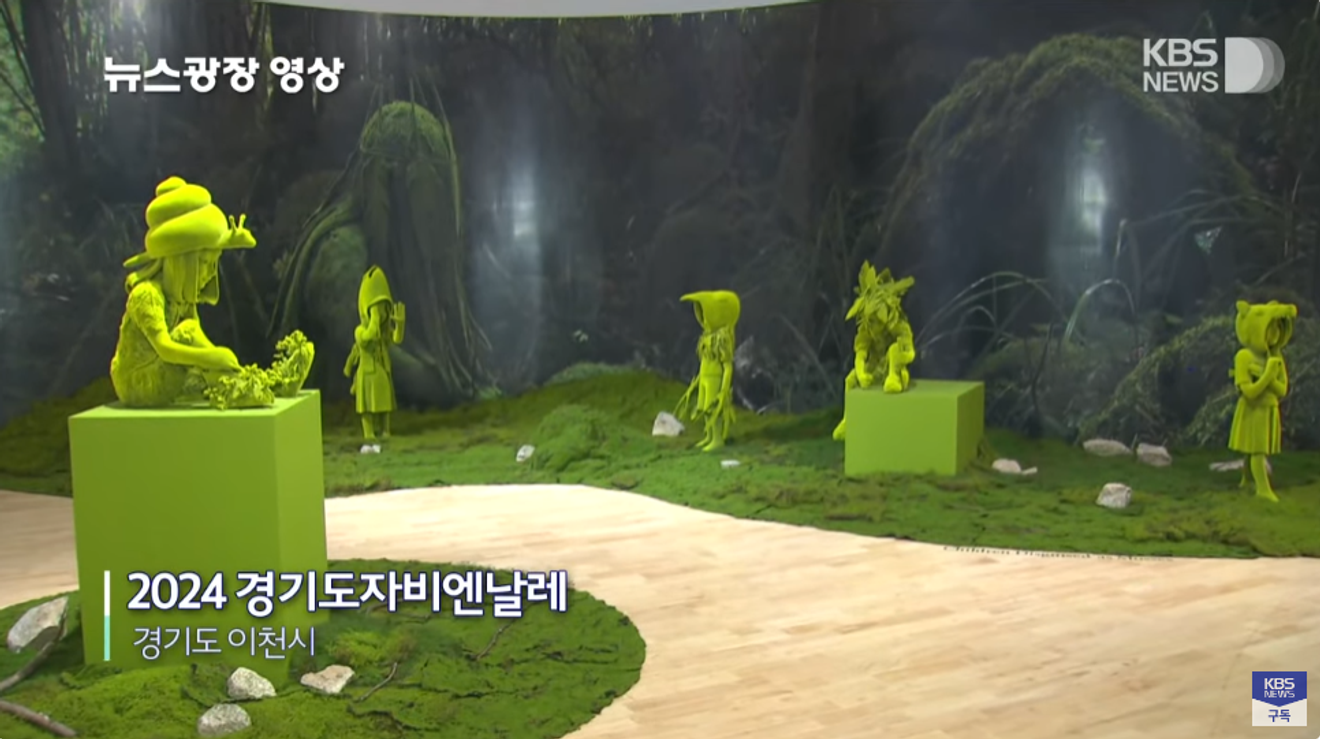
Source: KBS
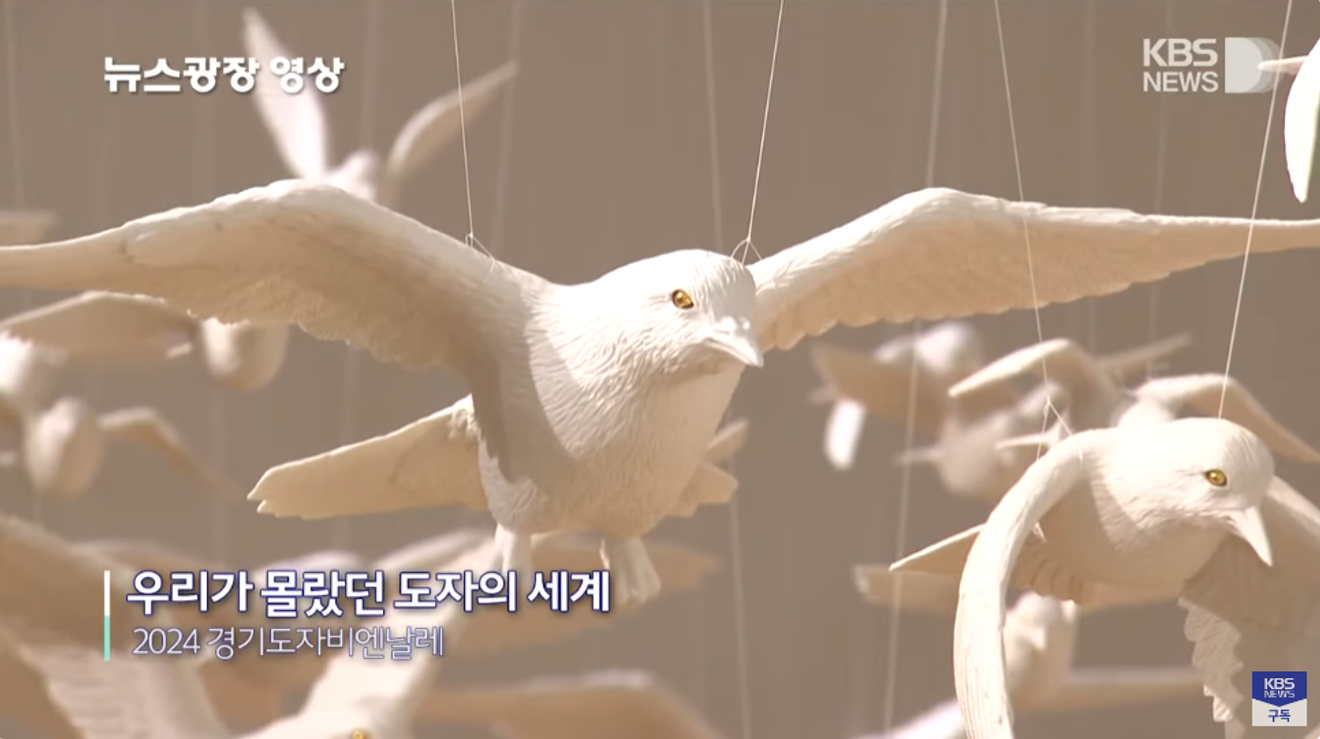
Source: KBS
2024 Gyeonggi Ceramics Biennale (2024경기도자비엔날레)
September 6, 2024 ~ October 20, 2024
This is the largest domestic event and a biennial international art event where you can experience ceramics from over 70 countries around the world.
Celebrating its 12th anniversary this year, the <2024 Gyeonggi Ceramics Biennale> featured 780 ceramic art pieces from 1,500 artists.
Academic conferences, workshops, exhibitions, flea markets, and events were held at venues in Icheon, Yeoju, and Gwangju, Gyeonggi-do.
Various events held throughout Gyeonggi-do could be enjoyed. Over 278,000 visitors attended during the 45-day exhibition period.
The <2024 Gyeonggi Ceramics Biennale International Competition>held at the Gyeonggi Living Ceramic Museumwill extend its exhibition until February 2, 2025.
(Source: Gyeonggi Ceramics Biennale website)
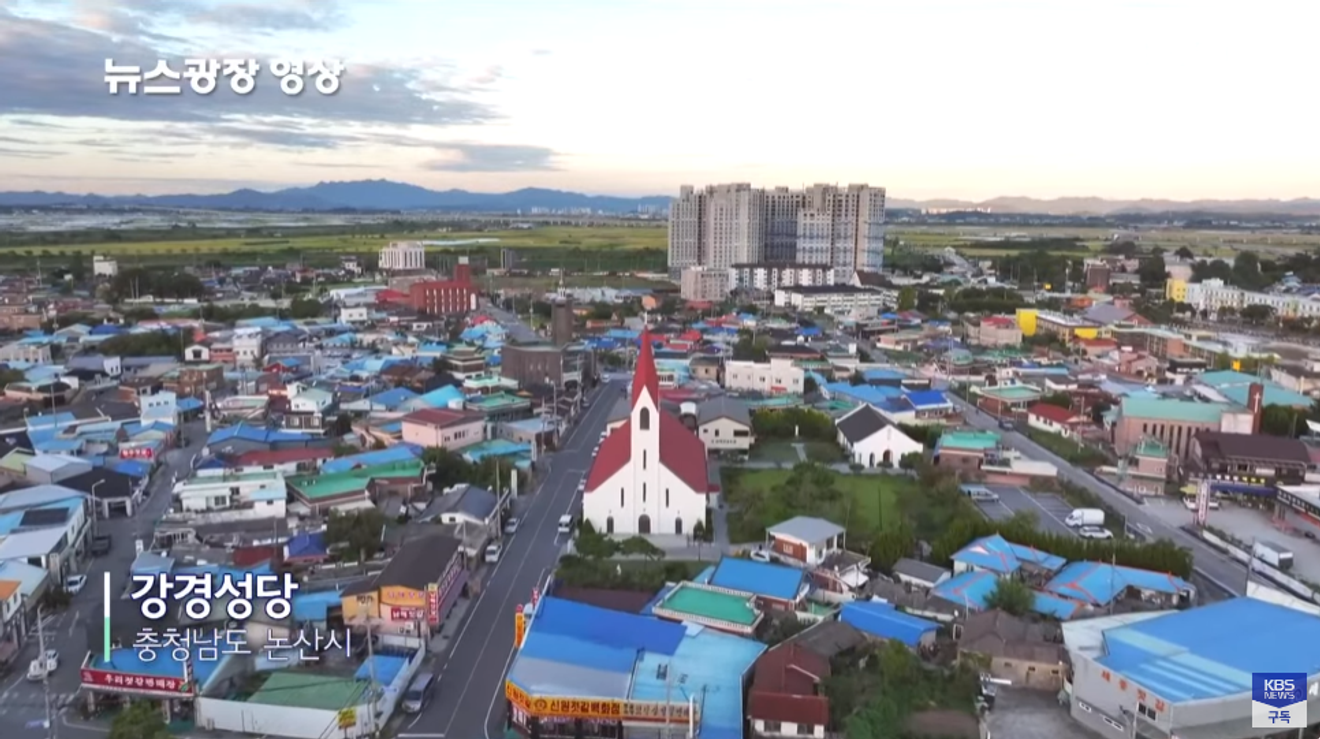
Source: KBS
Ganggyeong Cathedral
Ganggyeong Cathedral: Where the history of the Korean Catholic Church and modern architecture blend
Established in 1946, separated from the Buchang-dong parish in Nonsan, Ganggyeong Cathedral
is a special place showcasing a harmonious blend of the history of the Korean Catholic Church and modern architecture.
Ganggyeong, the cradle of the Korean Catholic Church
Ganggyeong is where Father Andrew Kim Taegonfirst set foot in Korea andcelebrated the first Mass,
making it a historically significant site that marked the beginning of the Korean Catholic Church.
In 1845, Father Kim Taegon arrived near Hwangsanpo, Ganggyeong, and stayed at Gusun-o's house for a month,
caring for and ministering to believers.
Ganggyeong Cathedral: A masterpiece of modern architecture
Built in 1961, Ganggyeong Cathedral was designed and supervised by Father Bodebang, who was well-versed in architecture, and
boasts a unique pointed arch structure for its time.
Reasons for designation as Registered Cultural Heritage No. 650
• Historical Value: As a place where the footsteps of Father Andrew Kim Taegon, who heralded the beginning of the Korean Catholic Church, remain, it holds significant religious meaning.
• Architectural Value: Its pointed arch structure demonstrates the advancement of construction technology at the time,
and it is considered a pioneering work of modern architecture.
• Preservation Value: It maintains its original appearance well, and its preservation condition is excellent, allowing
its historical and architectural value to be maintained continuously.
(Source: Korea Tourism Organization)
Ganggyeong Cathedral is a living cultural heritage where the history of the Korean Catholic Church and modern architecture blend together.
If you visit Nonsan, be sure to visit and experience the history of the Korean Catholic Church.
I'm also including a trailer for a movie based on the story of Andrew Kim Taegon, the first Catholic priest in Korea.
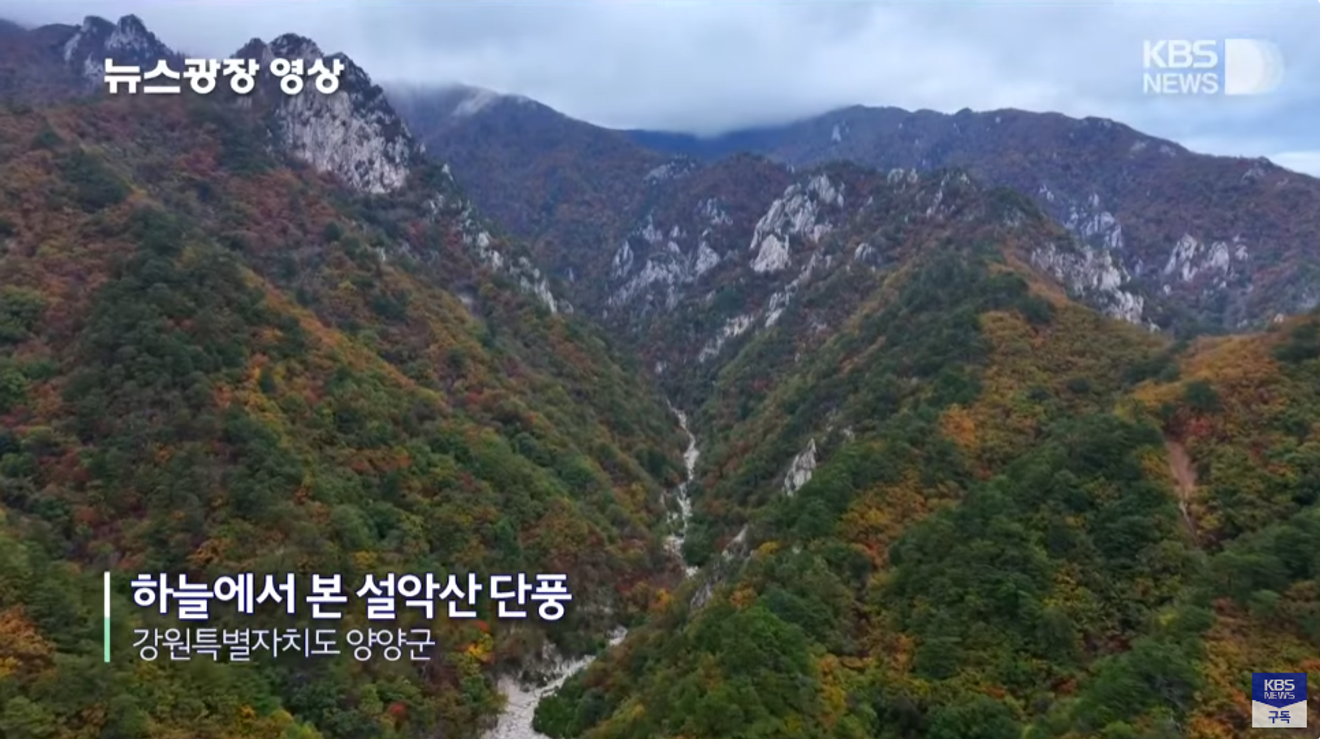
Source: KBS
Delayed Autumn Leaves, Fading Autumn Scenery... The Shadow of the Climate Crisis
Autumn arrived unusually late this year, and the news of the autumn leaves is also delayed, making us feel rather gloomy.
Normally, mountains and fields would be painted in vibrant colors, allowing us to fully enjoy the autumn atmosphere, but this year, the late summer heat continued into September,
delaying the autumn leaves. In some areas, there are even more trees with green leaves than usual.
Similar to spring flowers, the Korea Meteorological Administrationreleases the <National Autumn Leaf Status>. 👇
Why are the autumn leaves delayed?
When autumn arrives and the temperature drops, the chlorophyll in trees breaks down, revealing other pigments, causing the leaves to turn red.
However, when temperatures remain high for as long as they did this year, the trees continue to produce chlorophyll, keeping the leaves green.
It's as if summer has been prolonged, and the trees' biological clocks have been delayed.
Is the delayed autumn foliage really okay?
• Adverse effects on tree growth: Trees need a period of rest to grow healthily.
However, due to irregular temperature changes, trees that are not able to properly rest
may become vulnerable to pests and diseases and experience stunted growth the following year.
• Ecological imbalance: Autumn leaves play an important role in providing food and habitat for various organisms such as insects and birds,
and delays in the autumn leaf season can cause changes in the ecosystem of these organisms.
• Reduced carbon absorption capacity: Trees play a crucial role in absorbing carbon dioxide and releasing oxygen.
However, if tree growth is inhibited due to climate change, the carbon absorption capacity is weakened,
potentially exacerbating climate change.
Experts warn that we may not be able to see vibrant autumn leaves in Korea within the next 10 to 20 years. 😥
Last year, I was saddened to see ginkgo trees turning brown and falling before they turned yellow,
and it seems likely this will happen more often and more frequently, making me feel gloomy.
The autumn leaves in Seoraksan are nearing the end, but go and enjoy the autumn scenery of other mountains!
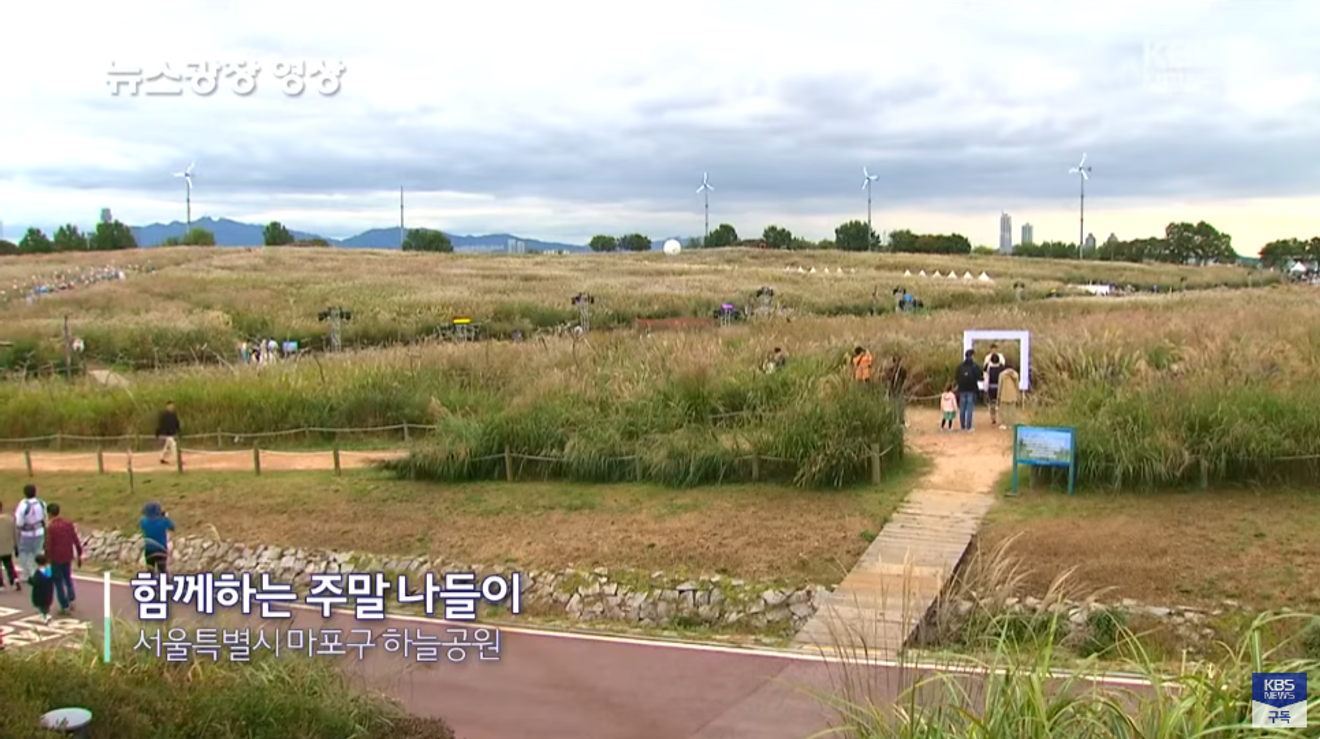
Source: KBS
Haneul Park
Address: 482, Sangam-dong, Mapo-gu, Seoul
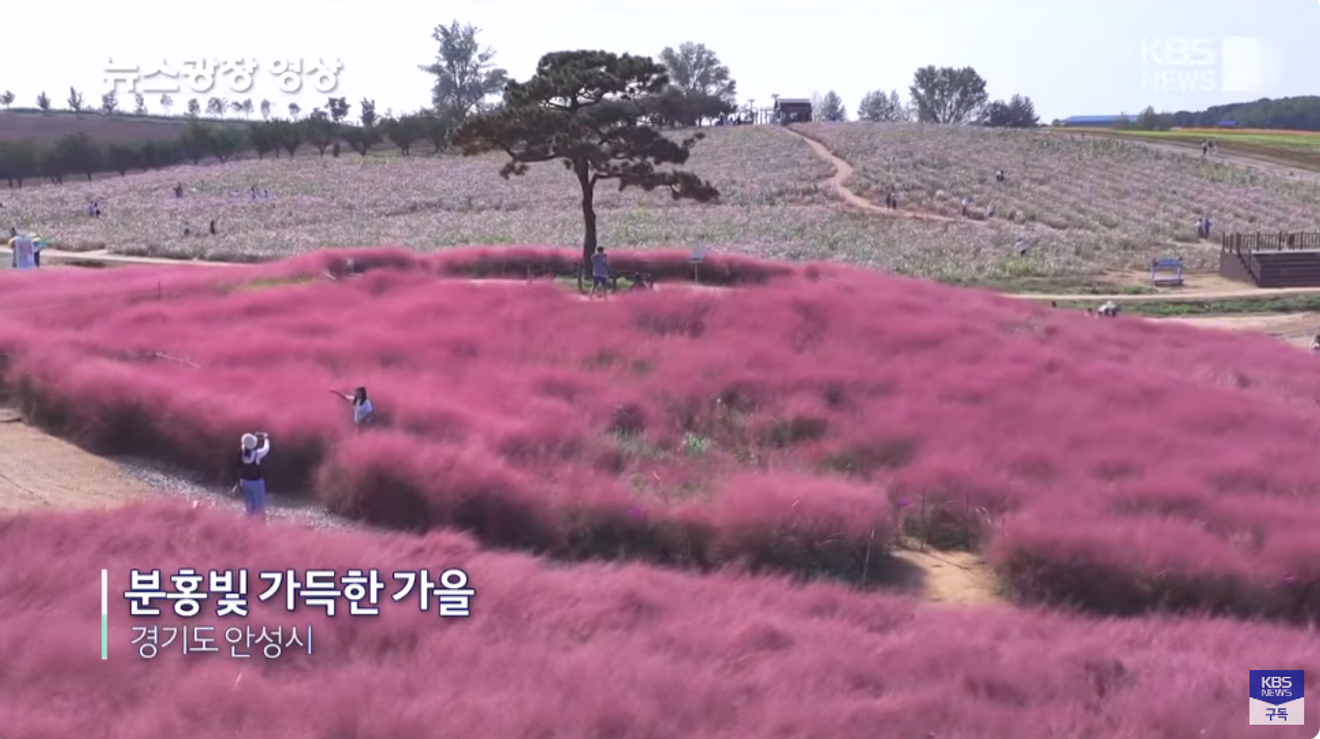
Source: KBS
Anseong Farmland
Pink muhly grass, which invariably captures our attention in the fall.
The beautiful scenery, like a pink wave spreading out, is gaining popularity by providing many people with "Instagrammable" moments.
What is pink muhly grass?
It is a perennial herb belonging to the genus Muhlenbergia in the family Poaceae, and its Korean name is '털쥐꼬리새'.
The pink or purplish flowersthat bloom from September to November are impressive, and
because of its resemblance to Eulalia, it is also called pink Eulalia.
Pink muhly grass, which grows to 30-90cm, creates a pink wave in autumn with green leaves, capturing the attention of many.
Controversy surrounding pink muhly grass
In 2019, the National Institute of Ecology designated pink muhly grass as'Level 2 ecological hazard'concluding that continuous observation is necessary.
Level 2 ecological hazard refers to organisms that do not immediately have a significant impact on the ecosystem but may disrupt the ecosystem in the long term.
Potential impact of pink muhly grass on the ecosystem
• Hindering the growth of native plants: It can rapidly multiply and hinder the growth of native plants.
• Reduction of biodiversity: If pink muhly grass becomes a dominant species, biodiversity may decrease.
• Potential for allergic reactions: There are also claims that pollen can cause allergies.
In Korea, pink muhly grass was first planted in 2014 at the Hueari Ecological Theme Park in Jeju Island,
and its beautiful appearance gained popularity, rapidly increasing the number of colonies, including areas near the Suncheon Bay Garden and Gyeongju Cheomseongdae.
However, with its designation as a 'Level 2 ecological hazard', many have been removed.
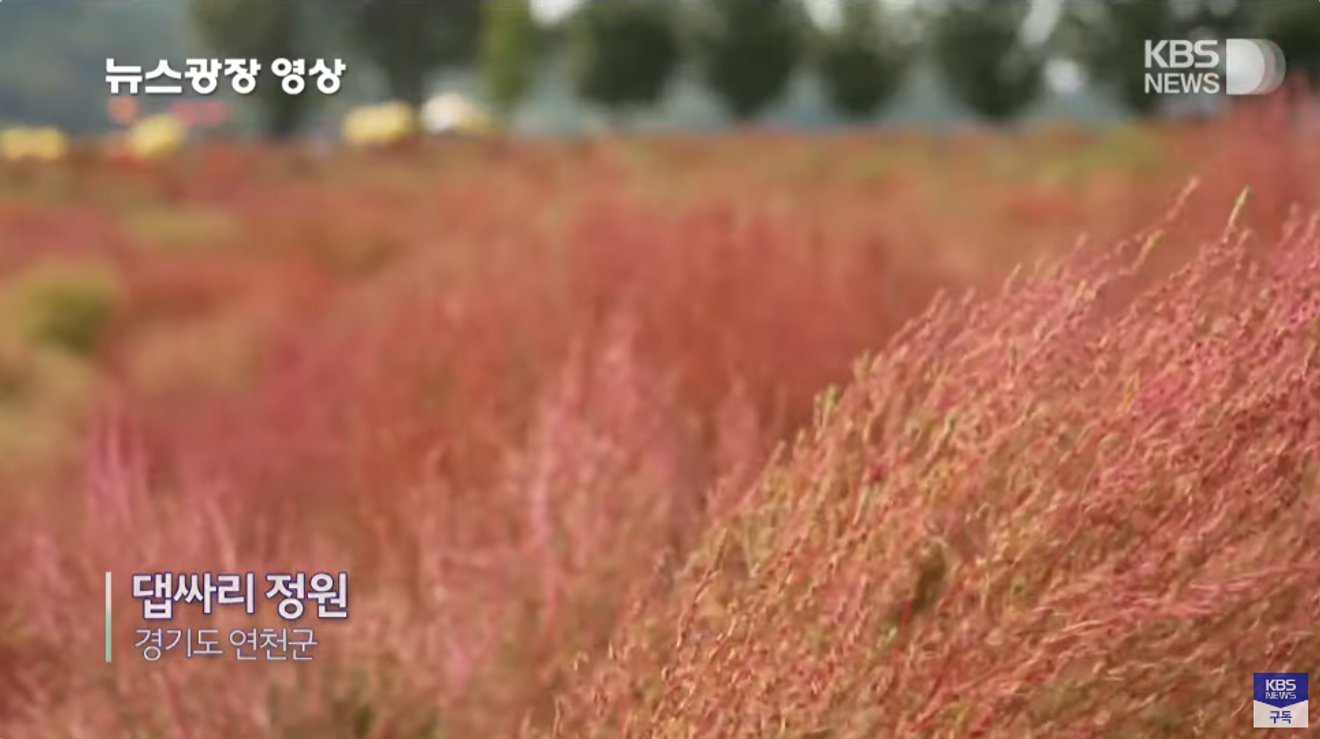
Source: KBS
Imjingang Kochia Park
This park was created by planting about 20,000 Kochia plants over approximately 30,000㎡ in front of the Samgot-ri dolmen tombs in Yeoncheon.
In addition to Kochia, you can also see various flowers such as yellow cosmos, chrysanthemums, zinnias, globe amaranth, marigolds, portulaca, and canna.
Kochia, with the flower language of ‘humble, pure beauty’
From late August, they turn reddish, and in early September, they turn pink, red, and orange, creating a unique atmosphere.
Imjingang Kochia Park is a place where you can quietly enjoy nature with your family and loved ones and leave behind memorable photos,
and it's located near Seoul, making it perfect for a day trip.
(Source: Korea Tourism Organization)



![[팩트체크] 핑크뮬리가 '생태계 교란 생물'이라고?](https://photo.jtbc.co.kr/news/2020/10/15/202010152106095563_LC.jpg?width=140&height=140)
Comments0